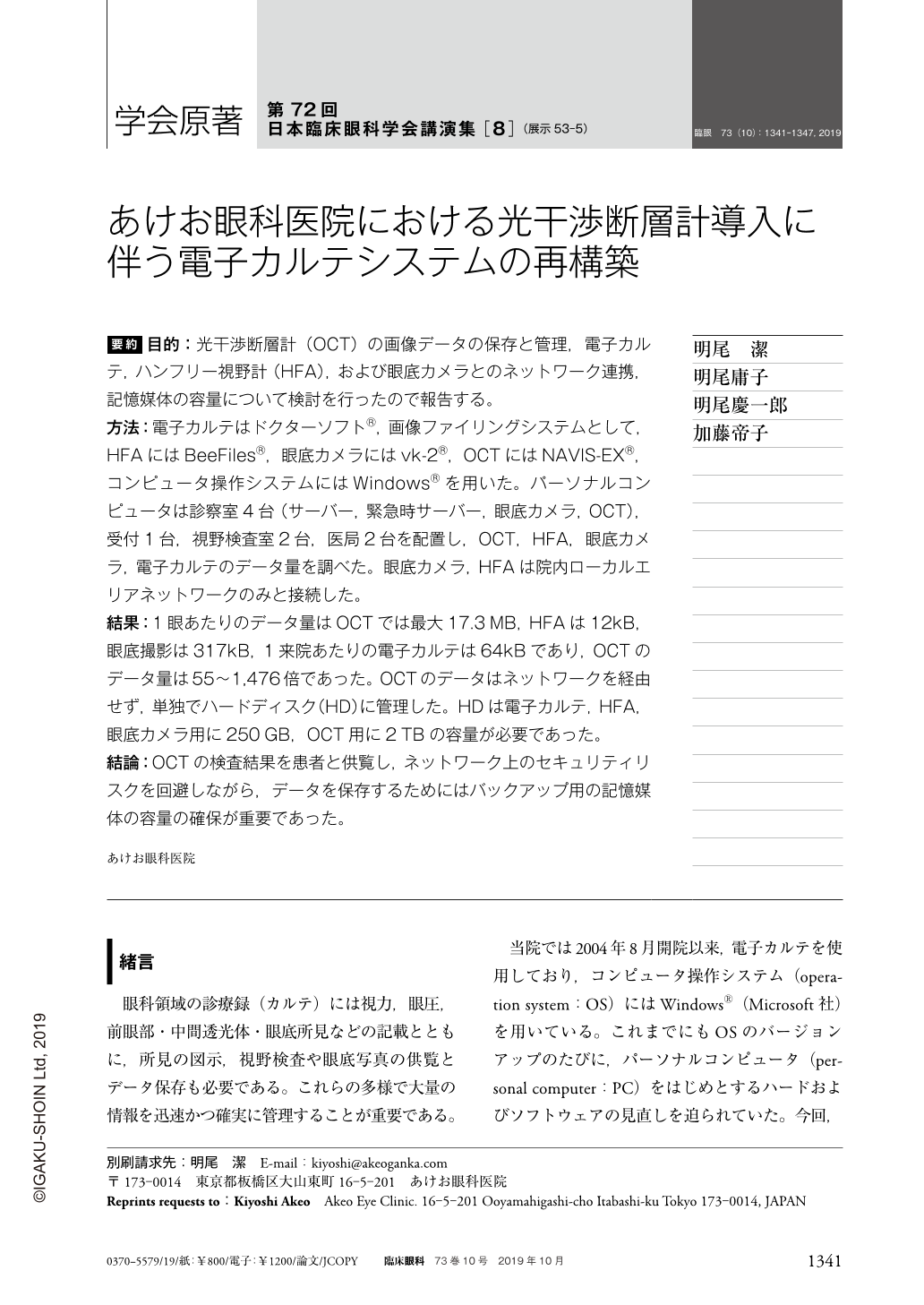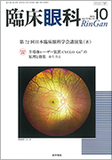Japanese
English
- 有料閲覧
- Abstract 文献概要
- 1ページ目 Look Inside
- 参考文献 Reference
要約 目的:光干渉断層計(OCT)の画像データの保存と管理,電子カルテ,ハンフリー視野計(HFA),および眼底カメラとのネットワーク連携,記憶媒体の容量について検討を行ったので報告する。
方法:電子カルテはドクターソフト®,画像ファイリングシステムとして,HFAにはBeeFiles®,眼底カメラにはvk-2®,OCTにはNAVIS-EX®,コンピュータ操作システムにはWindows®を用いた。パーソナルコンピュータは診察室4台(サーバー,緊急時サーバー,眼底カメラ,OCT),受付1台,視野検査室2台,医局2台を配置し,OCT,HFA,眼底カメラ,電子カルテのデータ量を調べた。眼底カメラ,HFAは院内ローカルエリアネットワークのみと接続した。
結果:1眼あたりのデータ量はOCTでは最大17.3MB,HFAは12kB,眼底撮影は317kB,1来院あたりの電子カルテは64kBであり,OCTのデータ量は55〜1,476倍であった。OCTのデータはネットワークを経由せず,単独でハードディスク(HD)に管理した。HDは電子カルテ,HFA,眼底カメラ用に250GB,OCT用に2TBの容量が必要であった。
結論:OCTの検査結果を患者と供覧し,ネットワーク上のセキュリティリスクを回避しながら,データを保存するためにはバックアップ用の記憶媒体の容量の確保が重要であった。
Abstract Background:Electronic medical record has been used since 2004 at Akeo Eye Clinic. Nine terminals are connected to the mainframe. Capacity for storage of data is maximally 12 kB per eye for visual field, and 317 kB per eye for fundus imaging.
Purpose:To report modification in our electronic medical record after incorporation of optical coherence tomography(OCT).
Result:Capacity of mainframe computer had to be increased to 17.3 MB per eye. As the data for one patient per visit averaged 64 kB, data for OCT became 55 to 1,476 times greater. Data for OCT were stored in the hard disc circumventing the network. It was necessary for the hard disc to have capacity of 250 GB for electronic medical record, visual field and fundus images respectively in addition to 2 TB for OCT.
Conclusion:Considerable increase in capacity was needed to incorporate OCT data in the currently run electronic medical record.

Copyright © 2019, Igaku-Shoin Ltd. All rights reserved.


